Destination Madagascar: Week 4
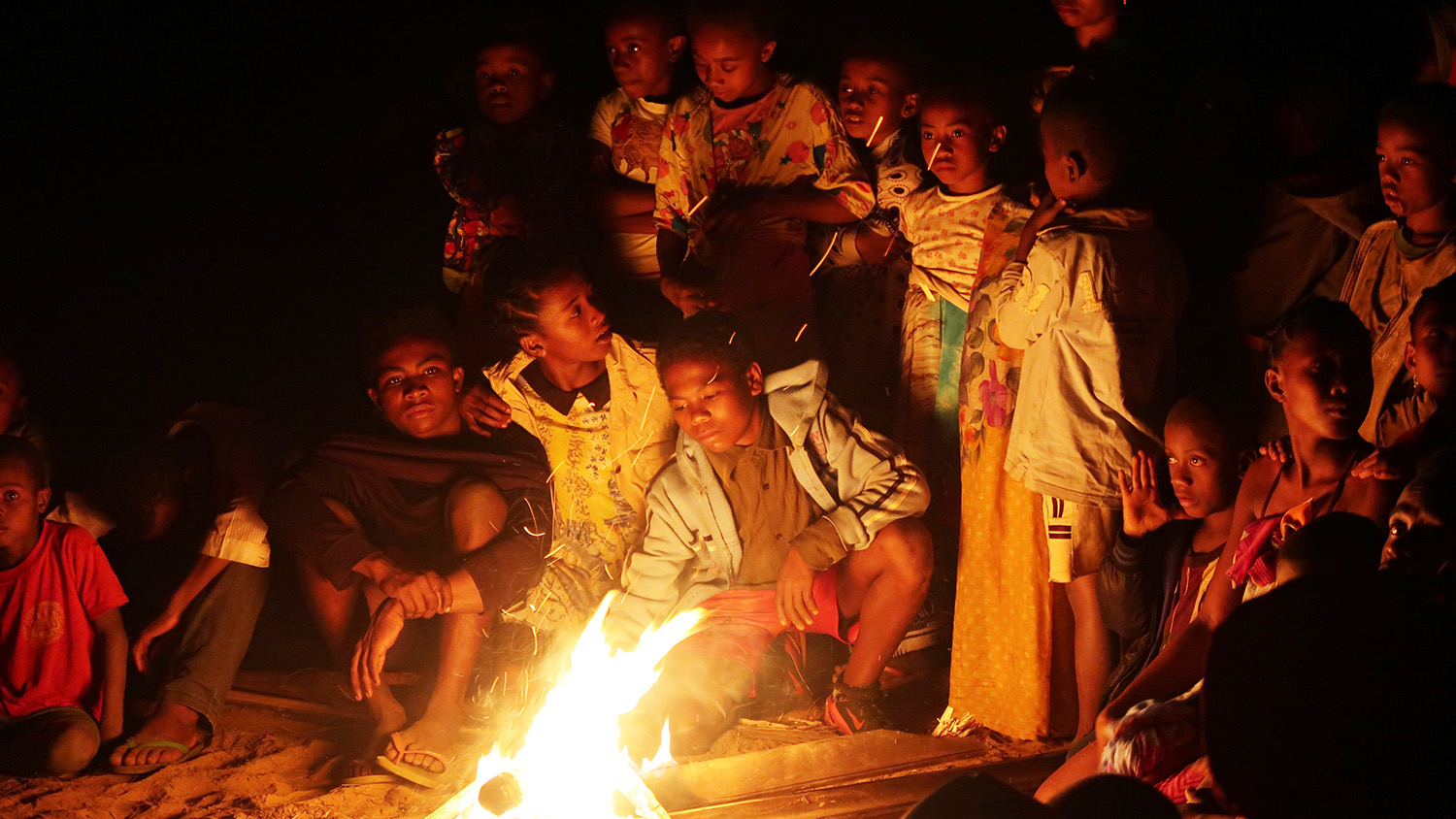
NOTE: This is the fourth and final part in a series of participant posts from the monthlong Ants and the Canopy Bootcamp in Madagascar (see the other entries below). The bootcamp, which wrapped up recently, is led by NC State University’s Bonnie Blaimer and the California Academy of Sciences’ Brian Fisher. The undergraduate and graduate students involved in the program come from across the country. The undergraduate research experience was funded by National Science Foundation grants DEB-1820839 and DEB-1655076.
By Camille DeSisto (Harvard College), Jacob Idec (Hendrix College), Ben Schwartz (Montana State University) and Anoop Karunakaran (India)
Lessons Learned in the Canopy
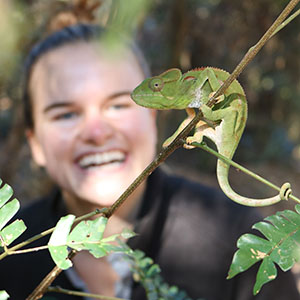
After drinking our last evening cup of ranon’apango (Malagasy rice tea) at Ankarafantsika National Park, we bid a bittersweet goodbye to the members of Ezaka. Fittingly translated into “bravery” in Malagasy, this local women’s association does more than just take care of eager biologists during their fieldwork. Filling the blessedly cool night with song, the women relayed their appreciation for the forest.
Though the park is protected, it does not exist in isolation from the local people of Antranofasaka. Rice fields, crucial for the health and livelihoods of the local people, extend into margins of the park and zebu, Malagasy cattle with great horns and large humps on their backs, are frequently escorted through the park on well-trod trails.
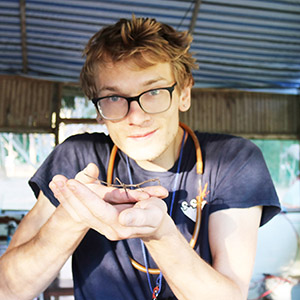
During the performance, one song and dance stood out – one celebrating the local fossa in its lyrics. Fossa are among the most fascinating denizens of Ankarafantsika, catlike carnivores closely related to the mongoose and found only on Madagascar.
Solo, our skilled guide from the village, translated the message of the song to compensate for our beginner Malagasy language skills. He explained the importance of the fossa, which eat rats harmful to the rice fields. In protecting the forest, the charismatic fossa, too, are protected.
The women of Ezaka also championed the local lake for the life it gives to the rice fields. They cited this relationship as a key motivator for protecting the forest.

It was not passing the lake on our walk to view chameleons and lemurs, nor even when the lake shone from our canopy view when we climbed the baobab, that sparked within us an authentic appreciation for its importance. Listening to the songs, bellies full of rice, helped us begin to understand the crucial connections that link the lake to human livelihoods.
Although our trip to Ankarafantsika was short-lived, there are many people who call this park home and have a deep understanding of the forest. We are increasingly inspired by the lessons lying within the folds of the canopy, many waiting to be discovered and many already understood by the local people.

We hope that our research on canopy ants will contribute to conservation discourses in Madagascar and continue the collaborative effort of protecting the island’s unique biodiversity.
We came to study ants. Although there was certainly no shortage in this regard, our learning far transcended one taxa.
Misaotra betsaka, Madagasikara.
July 31, 2019
Baobabs and Biodiversity
By Claire Williams (University of Illinois Urbana-Champaign), Miles Maxcer (Montana State University in Bozeman) and Peter Willadsen (NC State University)
After our 12-hour bus ride through rural Madagascar, we stepped out into the darkness and dust of Ankarafantsika National Park. Anxious to explore, we flicked on our headlamps to illuminate the forest edge.
“I’ve got an alate over here!” We had found a flying ant — a queen — attracted to our lights. In the first few minutes in our camp at Ambodimanga, we had already discovered a genus of ants (Parvaponera) not known to be in this region of Madagascar. Before we had time to celebrate, another discovery came to light. A chameleon, brilliantly-colored, was clinging to a branch at the edge of the clearing. The Malagasy classic brought the whole team together, collectively fascinated by its bizarre movement and disconcerting gaze.
Daily Discoveries
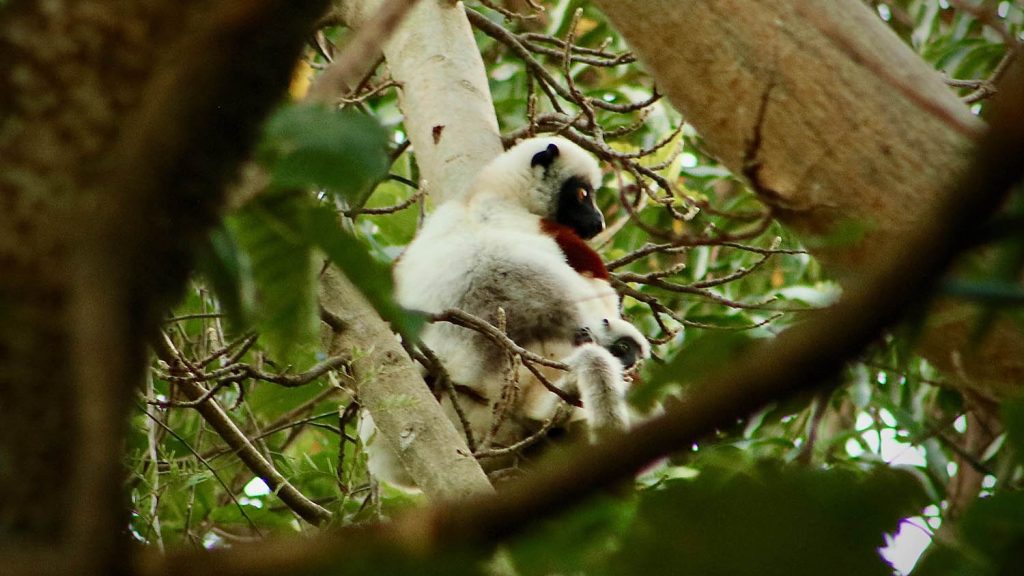
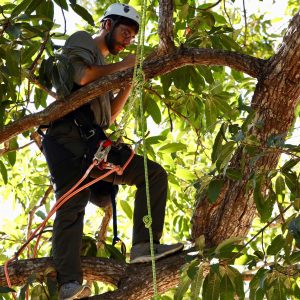
The next few days were marked with similarly exciting discoveries. After digging in the soil for hours, the world’s fastest animal plopped out of a chunk of dirt. A snap-jaw ant had emerged, its scythe-like jaws extended in a display that would have been intimidating, had the ant not been only a few millimeters long. We identified it as the genus Mystrium, known best for its incredible jaws, which can snap together in the fastest motion known from the animal kingdom.
While conducting our survey of the canopy, we heard rustling in the undergrowth. A few moments later, we were stunned to see a breathtaking ground boa (Acrantophis madagascariensis) slithering over a climbing bag below. Her cryptic coloration seamlessly blended into the leaves but was exposed on the white bag.
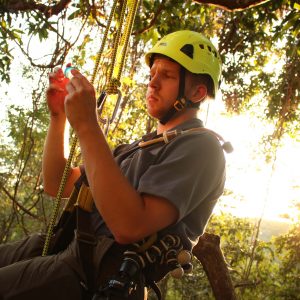
After exhausting old-growth trees in our initial study area, we expanded into the forest on the other side of camp. Our journey included a walk along the rice paddy, where a specialized predator could be found: We encountered nearly a dozen distinct species of insects known as praying mantises. These were adapted to the dry habitat, concealed by green and brown leaf-like patterns. One particularly fascinating specimen, its body long and pale, mimicked the dry blades of grass covering the clearing.
Meanwhile, a dig was underway in the forest. We unearthed another specialized predator, a living fossil — a spider once known only from the fossil record but later discovered extant in Madagascar. The pelican spider, with its namesake combination of a pelican’s head on a spider’s body, stumbled awkwardly around in the collection tray. It was not difficult to see why it’s once-extensive range is now limited to small, isolated regions of the world.
Up, Up and Away

Our tree climbing culminated with the ascent of the imposing baobabs, the tallest trees in the region. The enormous bare trunk rose over 100 feet tall, giving us an unparalleled climbing experience. Upon reaching the apex we took some time to enjoy the view while being buffeted by wind in our harnesses. After descending, we were greeted by the guardians of the dry forest — the Sifaka lemurs. A mother, its baby clutching her tummy, leaped from tree to tree, occasionally giving us a strikingly human-like stare.
Baobabs stand as a majestic symbol of Madagascar’s unique biodiversity — not only as hosts to many species, but as examples themselves of speciation caused by Madagascar’s varied habitats and isolation.
Having been separated from Africa and India for millions of years, its wildlife has diversified, producing some of the most specialized flora and fauna on Earth. This specialization, which drew biologists like us to Madagascar in the first place, is also what makes these species vulnerable to extinction.
An example of this interdependence is the lemurs’ reliance on specific fruiting trees, the loss of which would inevitably doom them to extinction. We work not only to catalog and understand the life in Madagascar for the sake of exploration and discover but also to provide the information critical to protecting it in the future.
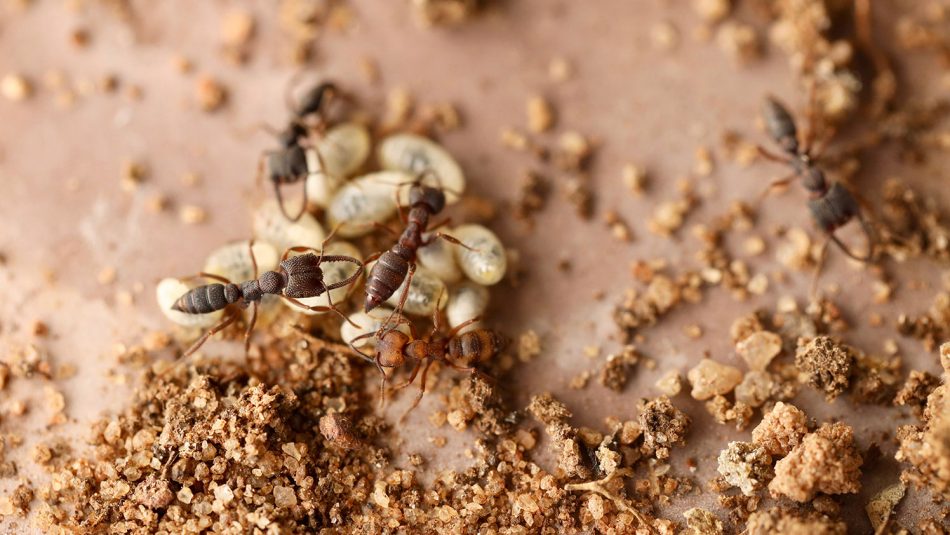
July 23, 2019
Tree-Search: Ant Edition
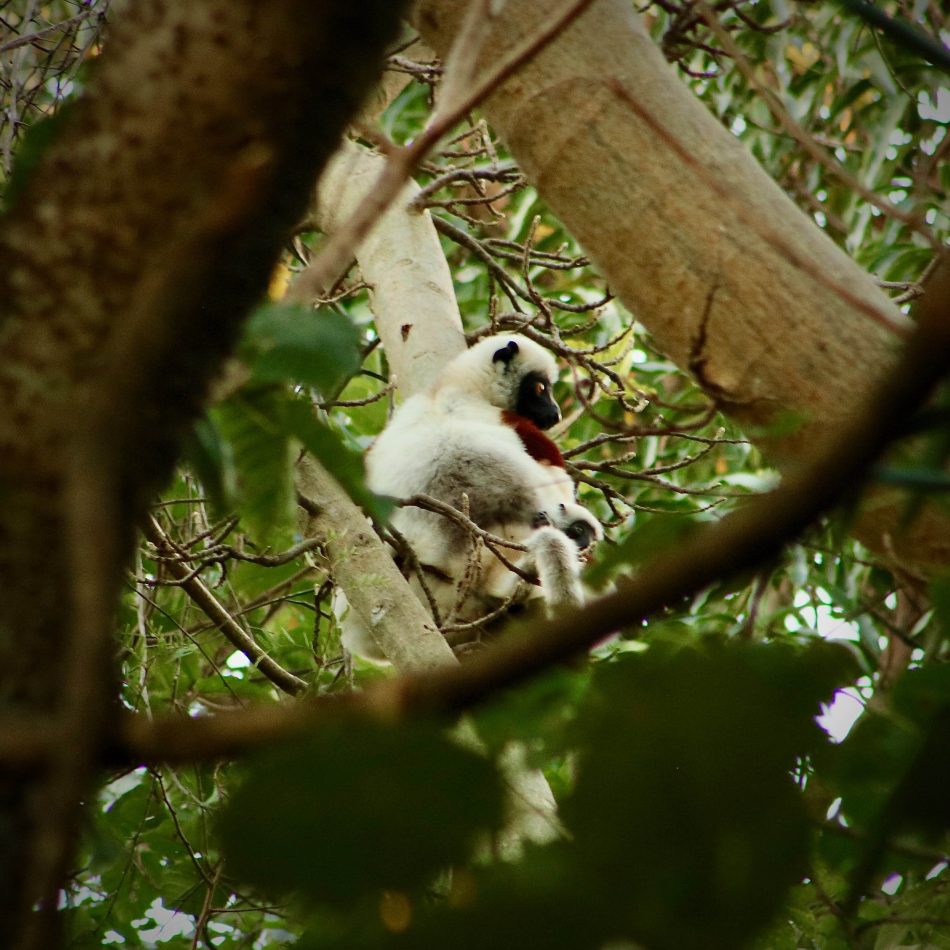
By Chloe Jelley (New Jersey Institute of Technology), Michelle Kirchner (NC State) and Jen Schlauch (University of Texas at Austin)
It’s 100ᵒ F. 9 a.m. A forest in Madagascar. You’re 60 feet up in a tree with a bag of peanuts in one pocket and a bag of ants in the other. They’re alive. Your fanny pack is full of tiny bottles of ethanol, also full of ants. They’re dead. Your friends are below you, hitting trees with sticks. You toss them the bag of ants in exchange for more peanuts.
Welcome to the Ants & Canopy Bootcamp.
What’s Going On
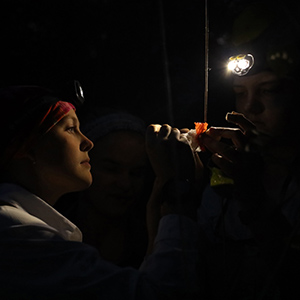
Madagascar’s diverse island biogeography provides a unique opportunity to study endemism and biodiversity. While interest in Malagasy wildlife often focuses on charismatic megafauna, our group of scientists has a much smaller focus (literally): ants. Of all animals, ants dominate the terrestrial biomass, and, unlike other more obscure insect groups, are relatively easy to identify. This family of insects can be found in a variety of microhabitats such as in leaf litter, underground, and in the bark and canopy of trees.
While several studies of leaf litter ants have been conducted in Madagascar, sampling ants from the tree canopy can be challenging or expensive and is therefore largely understudied. Our research focused on the canopy ants in Ankarafantsika National Park in the Northwestern dry forest of Madagascar. This is the first canopy expedition to ever happen in this area. A team of two dozen, composed of researchers, tree climbers and Malagasy guides spent eight days in the field collecting and observing ants.

What We’re Doing
Ants can be collected in several ways.
- General collecting (an extremely complex method): consists of breaking twigs, peeling bark, and surveying surrounding plants for foragers, both in the understory and canopy
- Beating sheet (hitting things with sticks): a white sheet is placed under a particularly appealing branch and the branch is hit with a local stick so that any falling ants nearby are caught in the sheet
- Bait lines (stinky Christmas lights): sardine baits are strung equally spaced on a line, which is left in a tree for several hours to attract hungry ants

Going up into the canopy and observing ants in the field allowed for the unique opportunity of studying ant behavior in situ. When nests were located, eggs, larvae and queens were collected along with workers. Once ants were collected, they were observed, put into vials of ethanol, and labeled with identification and locality information.
Back in the capital of Antananarivo, in the beautiful Madagascar Biodiversity Center, we are currently identifying, pinning and organizing the ants we gathered in the field. We hope to compare the ants from the canopy to the previously sampled ground-nesting ants of Ankarafantsika, as well as compare communities between different tree species and assessing general biodiversity. The specimens collected will provide valuable information about canopy ant communities in a location where they had never been sampled before. Understanding the species diversity of even the smallest animals gives us a better understanding of one of Madagascar’s unique ecosystems. We hope the data gathered will contribute to future conservation and pave the way for further canopy research in the region.
First Entry: July 8, 2019
Destination: Madagascar, ‘the Living Laboratory’

By Gabi Camacho and Carol Loss
Postdoctoral Research Fellows, Madagascar Ant Microendemism
Imagine traveling to Madagascar, an island with remarkable biodiversity, best-known for its lemurs, baobabs, colorful chameleons and frogs, strange insects and plants.
Now imagine experiencing this extraordinary place not only as a passing traveler, but by being immersed in studying the island’s distinctive natural history and fauna, exploring rainforest treetops while learning tree climbing techniques. This is what the Ants and Canopy Bootcamp is offering a group of undergraduate students from the United States and Madagascar this summer.
[pullquote align=right, color=red]Madagascar is a living laboratory, [with] so many unique species that almost anything you see … cannot be found anywhere else.[/pullquote]
This training opportunity is provided collaboratively by the Bonnie Blaimer’s lab at NC State University, Brian Fisher’s lab at the California Academy of Sciences, and the Madagascar Biodiversity Center. The bootcamp is an education component within a National Science Foundation project, Madagascar Ant Microendemism (MAMI), which investigates ant diversity patterns between different habitat types, elevation and vertical gradients across Madagascar with genomic and collection-based methods.
Scientists who specialize in Madagascar’s ant fauna and whose work is motivated to build a more sustainable country will conduct the boot camp. Blaimer’s work on insect diversity and biogeography focuses on expanding our knowledge on the evolution of ants in Madagascar, while Fisher’s research on the taxonomy and diversity of ants in Madagascar over the last two decades has generated a scientific data set on ant distributions that can inform conservation planning.
How Do We Know All This?

As MAMI’s postdoctoral research fellows, we are assisting with this challenging and exciting course:
Gabi has a Ph.D. in entomology with expertise in ant systematics – and a passion for ants, science and science outreach.
Carol earned her Ph.D. in animal biology and is an evolutionary biologist who loves maps and is excited about tropical species diversity in general.

As young biologists, we have heard for so long about the wonderful animal and plant life of Madagascar. The island is a living laboratory, having produced so many unique species that almost anything you see there cannot be found anywhere else on the globe. In fact, Madagascar is so diverse and unique that it is considered by many as the eighth continent.
On top of all that – literally – there is the canopy, the upper layer of the aboveground portion of trees. It’s estimated that a large percentage of life in the tropical forest is found in the trees.
Life, and Class, in the Trees
The rainforest canopy remains largely unexplored in most tropical countries, and Madagascar is no exception. Exploring ant diversity in Madagascar’s rainforest canopies means studying one of the most abundant animal groups in one of the most diverse and unexplored habitats and region in the world. Certainly not something you can do every day, right?
Over the course of four weeks this July, our students are being introduced to the kinds of ants that live exclusively in Madagascar and will learn how to identify and collect them on the ground, as well as up in the canopy of rainforest trees. Our students also hear lectures on the diversity and evolution of ants and their roles in the ecosystem. They also gain hands-on research experience with ants when we embark on a week-long field expedition to a rainforest. Moreover, the foreign participants are interacting with Malagasy students and getting to know their rich culture during Malagasy language lessons and other social interactions.
For us, this trip is not only about the opportunity to go halfway across the globe to explore ant diversity and study ant canopy ecology but also to experience teaching a field course focused on engaging students in a full scientific research experience.
Sharing a Passion for Science
We both acquired our scientific background by doing our doctoral research in Brazil. Being researchers from a developing country ourselves, we feel passionate about the opportunity to mentor aspiring scientists around the world. We were, and still are, inspired by many scientists during our careers and had wonderful opportunities to collaborate, exchange experiences and learn from them. We look forward to sharing our knowledge and passion for science with our ant bootcamp students.
[pullquote color=red align=left]We will be able not to only share our knowledge … but to guide (and learn from) the next generation of students.[/pullquote]
This experience is even more exciting for us, because we are able not to only share our knowledge on evolution and biodiversity, but also to apply all we know about teaching techniques and have the opportunity to guide (and learn from) the next generation of scientists. We are giving lectures on ant morphology, collecting methods, diversity and distribution, as well as workshops on how to build maps using open-source programs and how to conduct community phylogenetics analysis.
We will mentor students on their own research projects, from defining research hypotheses to delineating methodology and conducting data analyses. Each one of those lectures and workshops is an opportunity to apply our own teaching philosophies and to increase our experience in science communication and outreach, leading us further ahead in developing our careers and making us better and stronger scientists.
While the workshop focuses mainly on ants, we can’t stop ourselves from also being excited about the chance to spot Madagascar’s incredible fauna (beyond ants) in their natural environment and about interacting with and learning from the experiences and culture of the Malagasy people.
What’s Next?
We’re looking forward to sharing with you all about our upcoming adventure. We’ll introduce you to our students, and they will share their own perspective on the Ants & Canopy Bootcamp. Follow us throughout July at go.ncsu.edu/Madagascar to learn more.
- Categories:


